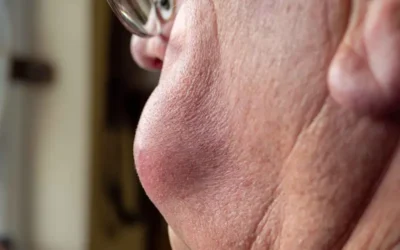There is growing concern over the global hepatitis epidemic. Viral hepatitis is diagnosed by the patient’s symptoms, physical exam and blood tests. Imaging studies such as a sonogram or CAT scan and a liver biopsy may also be used. Most physicians partner with experienced medical coding companies to report hepatitis and other diseases correctly with the latest ICD-10 diagnostic codes. This helps them report the condition with a high degree of specificity and to navigate the transition to value-based reimbursement. Moreover, error-free coding and documentation is crucial for accurately capturing the risk in the populations that physicians serve to prepare for population health management.
In its first global report on the infection, the World Health Organization (WHO) notes that viral hepatitis is a major public health challenge that requires an urgent response. A recent Healio report cites an expert as saying that viral hepatitis is simply not a sufficient priority in the U.S. In a report sponsored by the CDC and HHS, the American Association for the Study of Liver Diseases (AASLD), the Infectious Diseases Society of America (IDSA) and the National Viral Hepatitis Roundtable, the National Academies of Science, Engineering and Medicine recently released phase two of a report to eliminate viral hepatitis in the United States by 2030. Phase one of the report identified the viability of viral hepatitis elimination.
According to the report, accurate measurement of the national disease burden is necessary to eliminate viral hepatitis in the U.S. This involves:
- Standardized screening, follow-up, monitoring, and linkage to care of all viral hepatitis cases reported through public health scrutiny
- Understanding the epidemiology of viral hepatitis in high-risk populations
Though diagnosis of acute viral hepatitis often is easy, diagnosing chronic hepatitis can be difficult. Symptoms such as fatigue, nausea, abdominal pain, darkening of urine, and jaundice may confirm the diagnosis of acute viral hepatitis through by blood tests. However, patients with chronic hepatitis due to HBV and HCV often have only mild nonspecific symptoms or no symptoms and will usually not have jaundice until the liver damage is far advanced. In such patients, hepatitis can remain undiagnosed for years. The WHO notes that lack of access to testing and treatment, millions of people across the globe are at risk of a slow progression to chronic liver disease, cancer and premature death.
The ICD-10 diagnostic codes for hepatitis are as follows:
- Viral HepatitisB15.9 Acute Hepatitis A w/o hepatic coma
B18.0 Chronic viral Hepatitis B w/ delta agent
B18.1 Chronic viral Hepatitis B w/o delta-agent
B18.2 Chronic viral Hepatitis C
B18.8 Other chronic viral Hepatitis
B18.9 Chronic viral Hepatitis, unspecified
B19.10 Unspecified viral Hepatitis B w/o hepatic coma
B19.20 Unspecified viral Hepatitis C w/o hepatic coma
B19.9 Unspecified viral Hepatitis w/o hepatic coma - Chronic HepatitisK73.0 Chronic persistent Hepatitis, not elsewhere classified (NEC)
K73.1 Chronic lobular Hepatitis
NEC K73.2 Chronic active Hepatitis
NEC K73.8 Other chronic Hepatitis
NEC K73.9 Chronic Hepatitis, unspecified - Hepatic FailureK72.10 Chronic Hepatic failure
K72.90 Hepatic failure, unspecified w/o coma
K70.40 Alcoholic Hepatic failure w/o coma
K76.6 Portal Hypertension
K76.7 Hepatorenal syndrome
K76.81 Hepatopulmonary syndrome - CirrhosisK74.3 Primary biliary Cirrhosis
K74.4 Secondary biliary Cirrhosis
K74.5 Biliary Cirrhosis, unspecified
K70.30 Alcoholic Cirrhosis of liver w/o ascites
K70.31 Alcoholic Cirrhosis of liver w/ ascites
K74.60 Unspecified Cirrhosis of liver
K74.69 Other Cirrhosis of liver - Other Related ConditionsK75.4 Auto-immune Hepatitis – Lupoid Hepatitis NEC
R17.1 Unspecified jaundice
K70.9 Alcoholic liver disease, unspecified
F10.21 Alcohol dependence, in remission
F11.21 Opioid dependence, in remission
F13.21 Sedative, hypnotic, or anxiolytic dependence, in remission
F14.21 Cocaine dependence, in remission
F15.21 Other stimulant dependence, in remission
Z72.51 High risk heterosexual behavior
Z72.52 High risk homosexual behavior
C22. – Malignant neoplasm of liver and intra-hepatic bile ducts
An additional code should be used to identify: alcohol abuse and dependence (F10.-), Hepatitis B (B16.-, B18.0 – B18.1), Hepatitis C (B17.1-, B18.2).
As physicians focus on diagnosing hepatitis, a reliable medical billing and coding company can help them ensure accurate diagnostic coding to the highest level of specificity for proper reimbursement.



